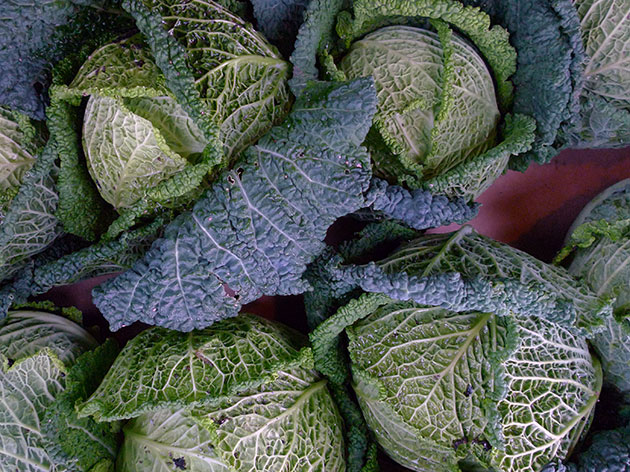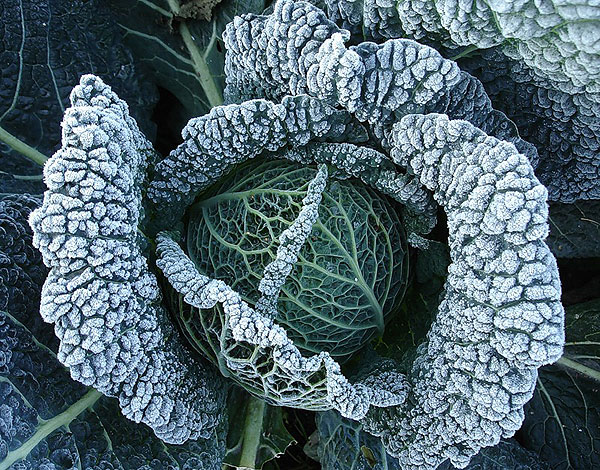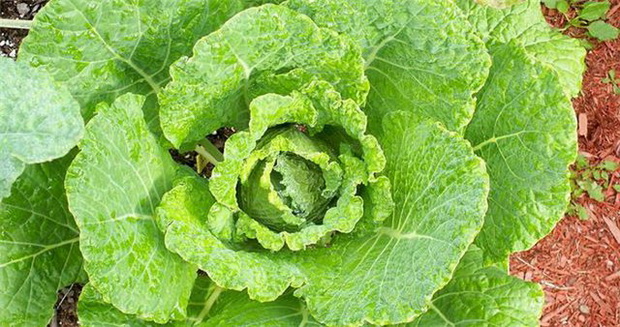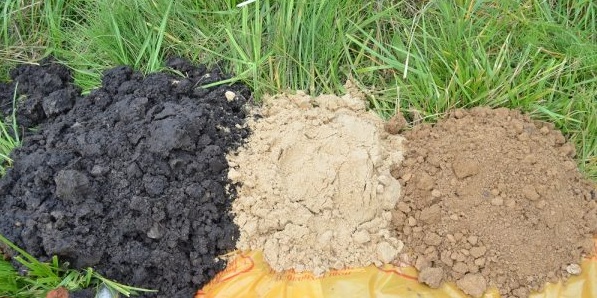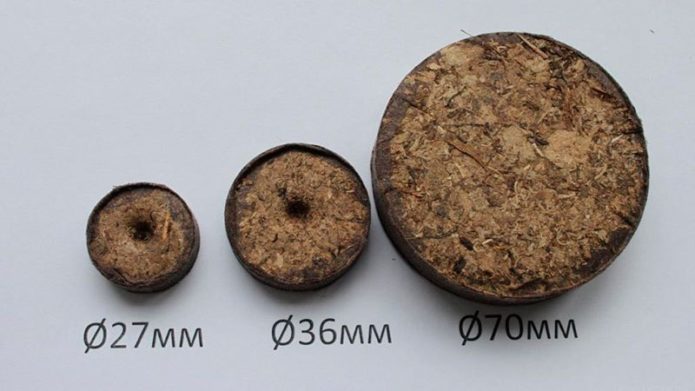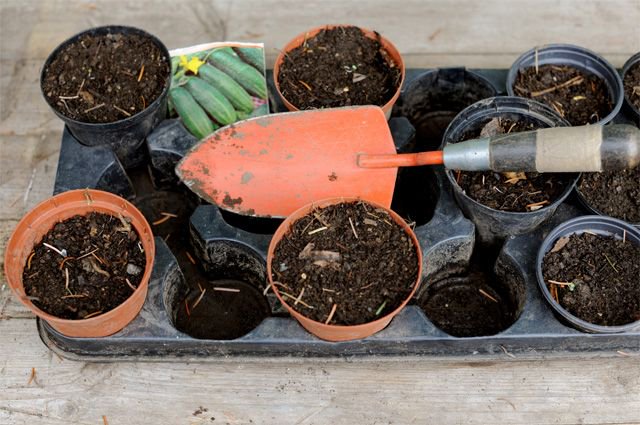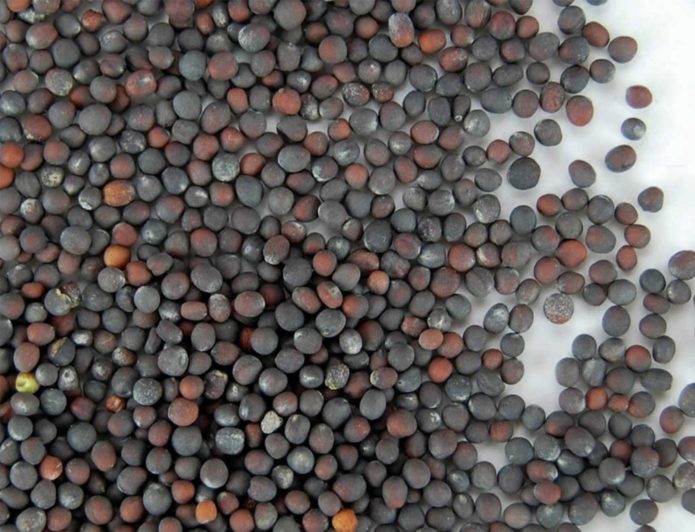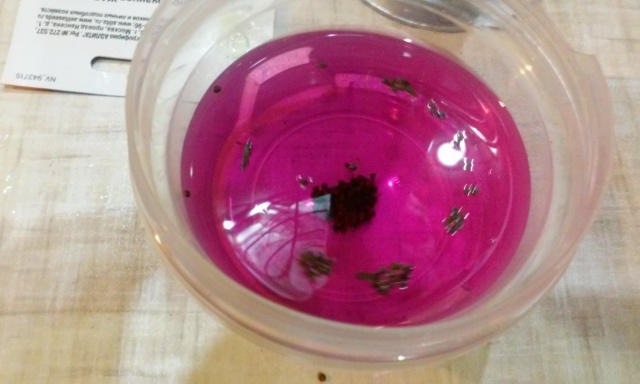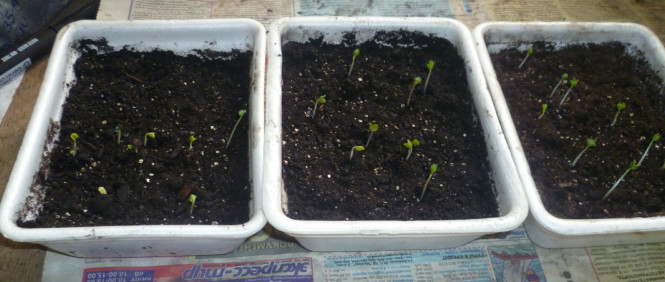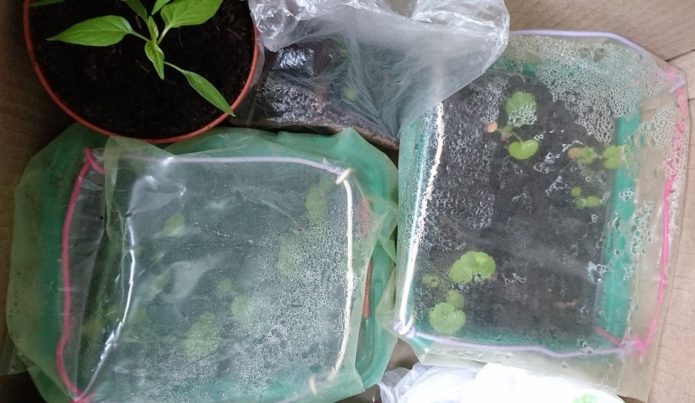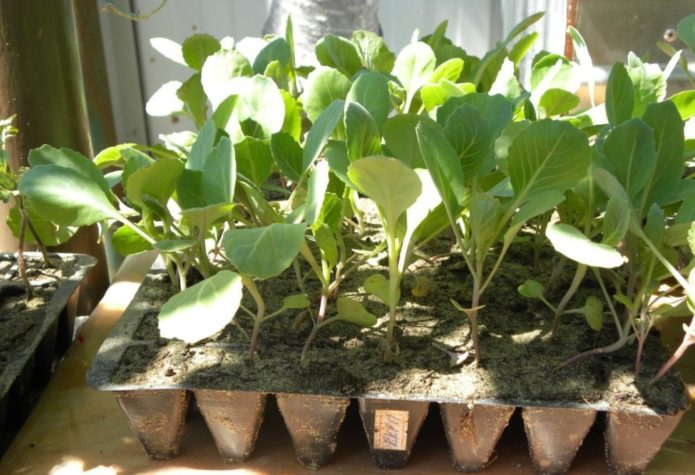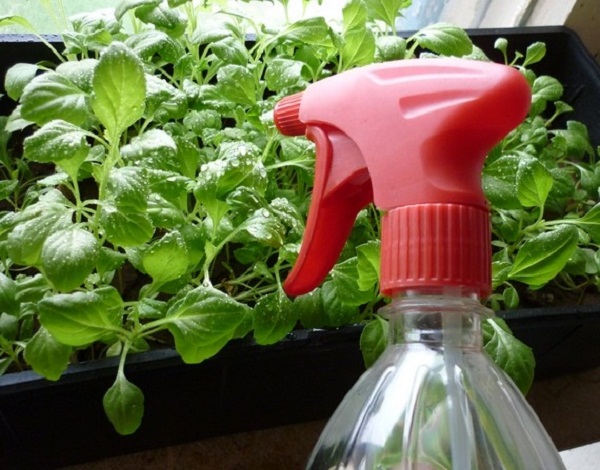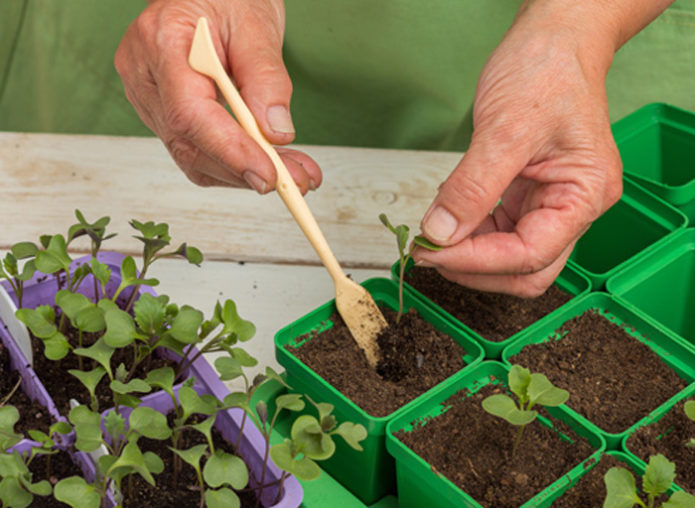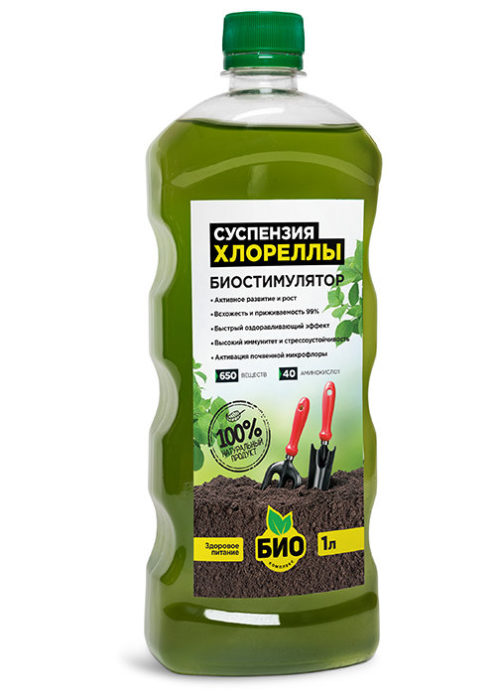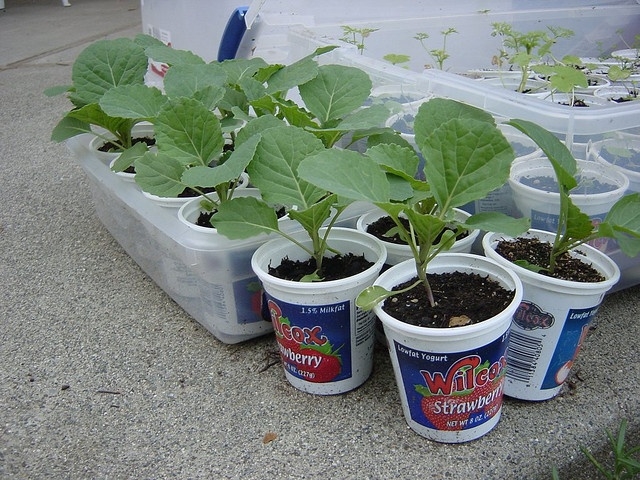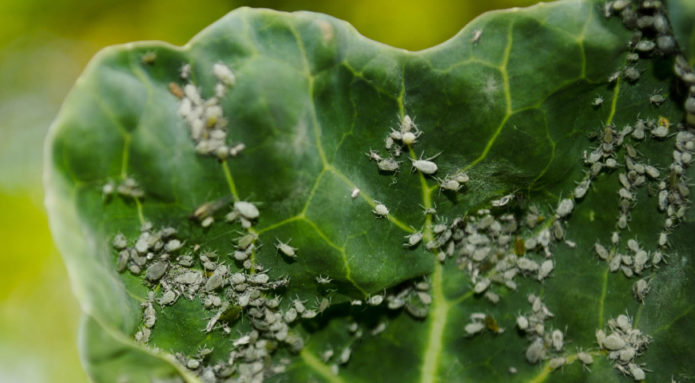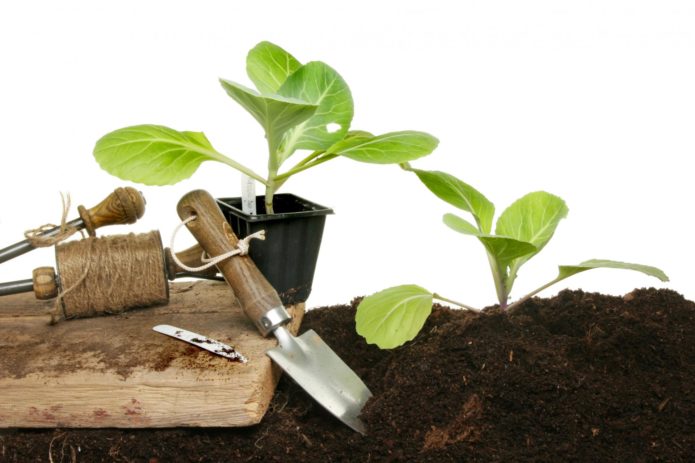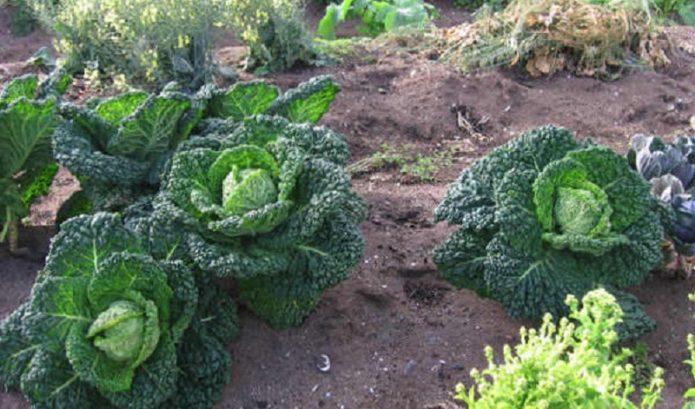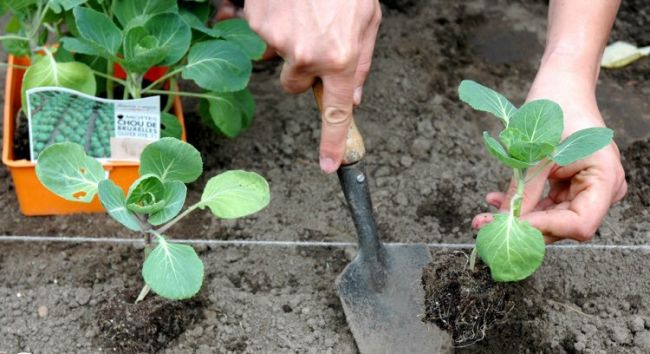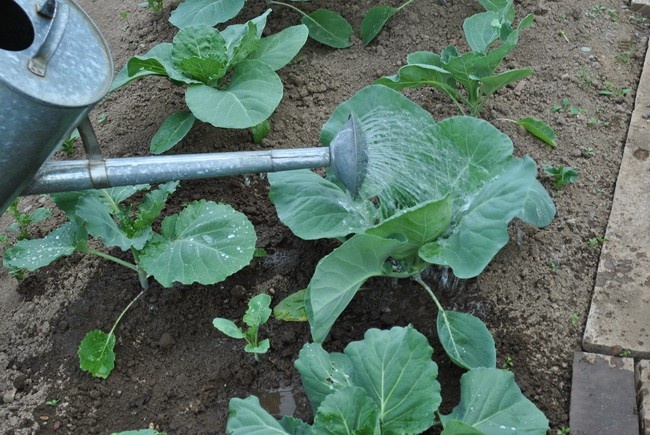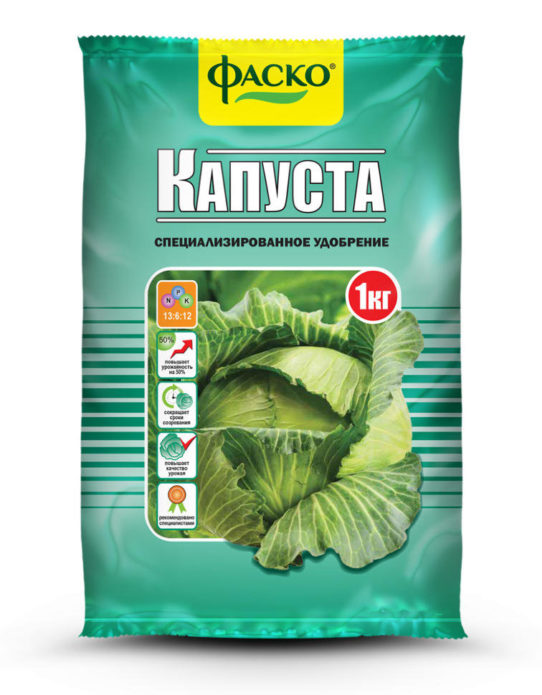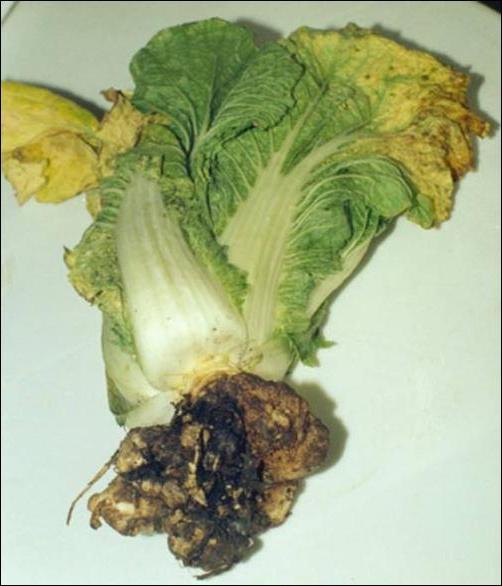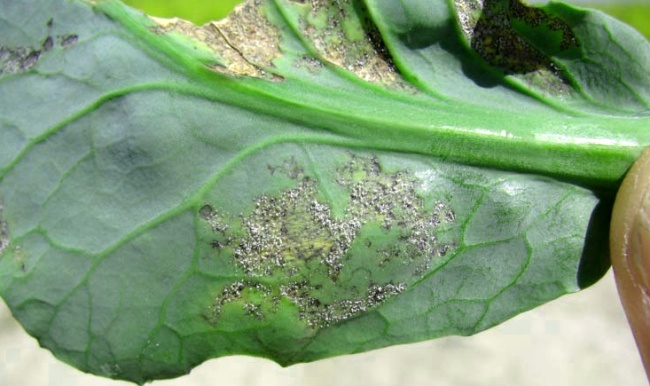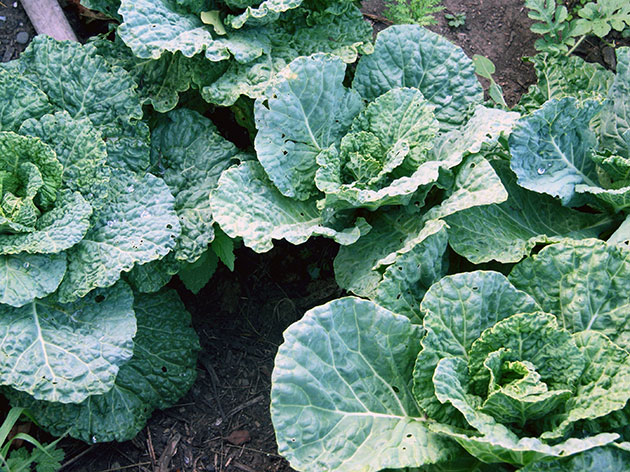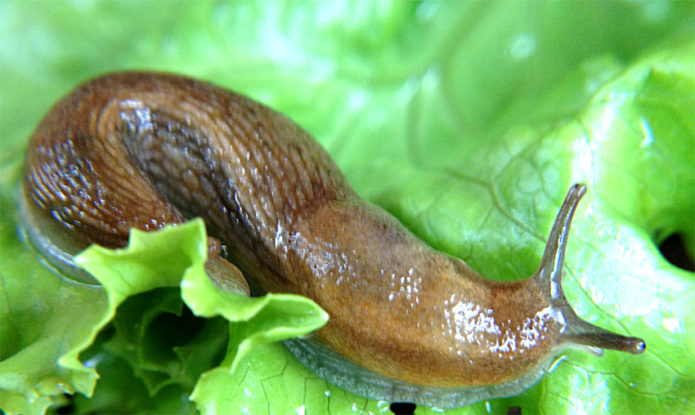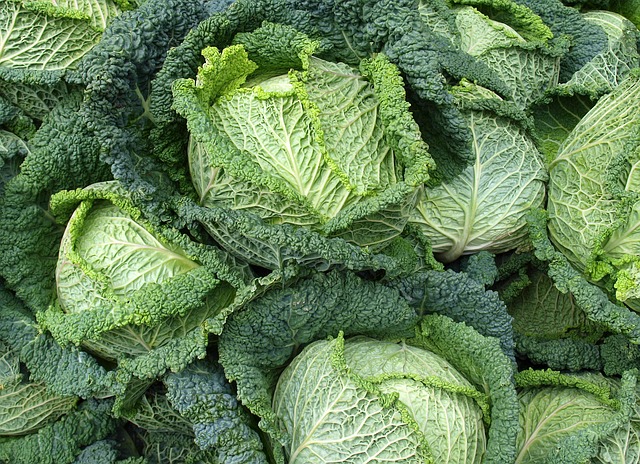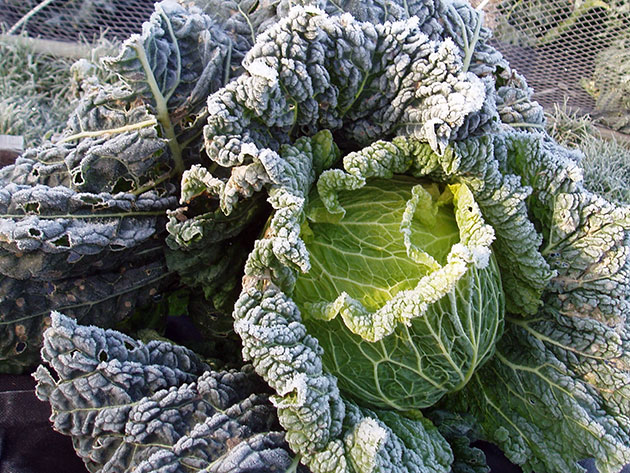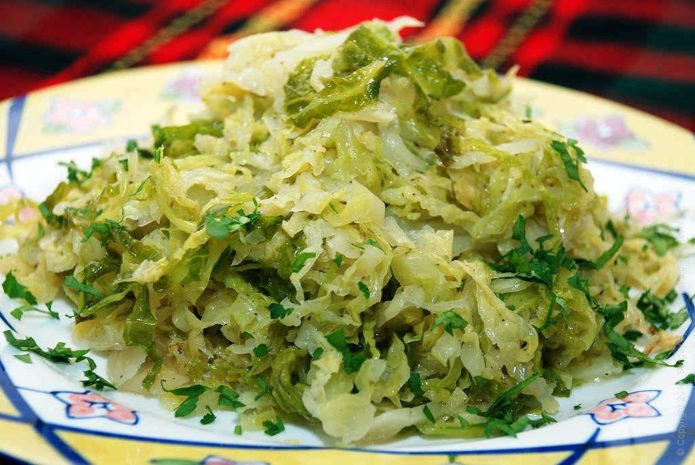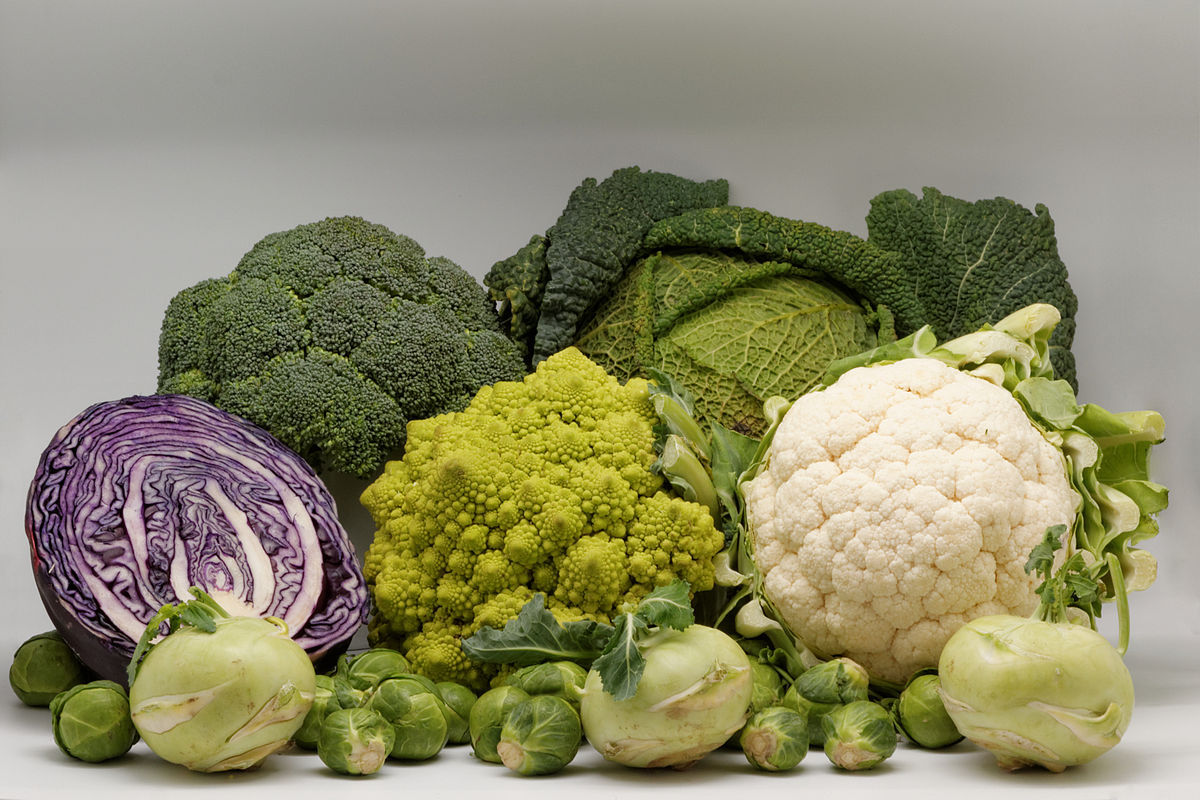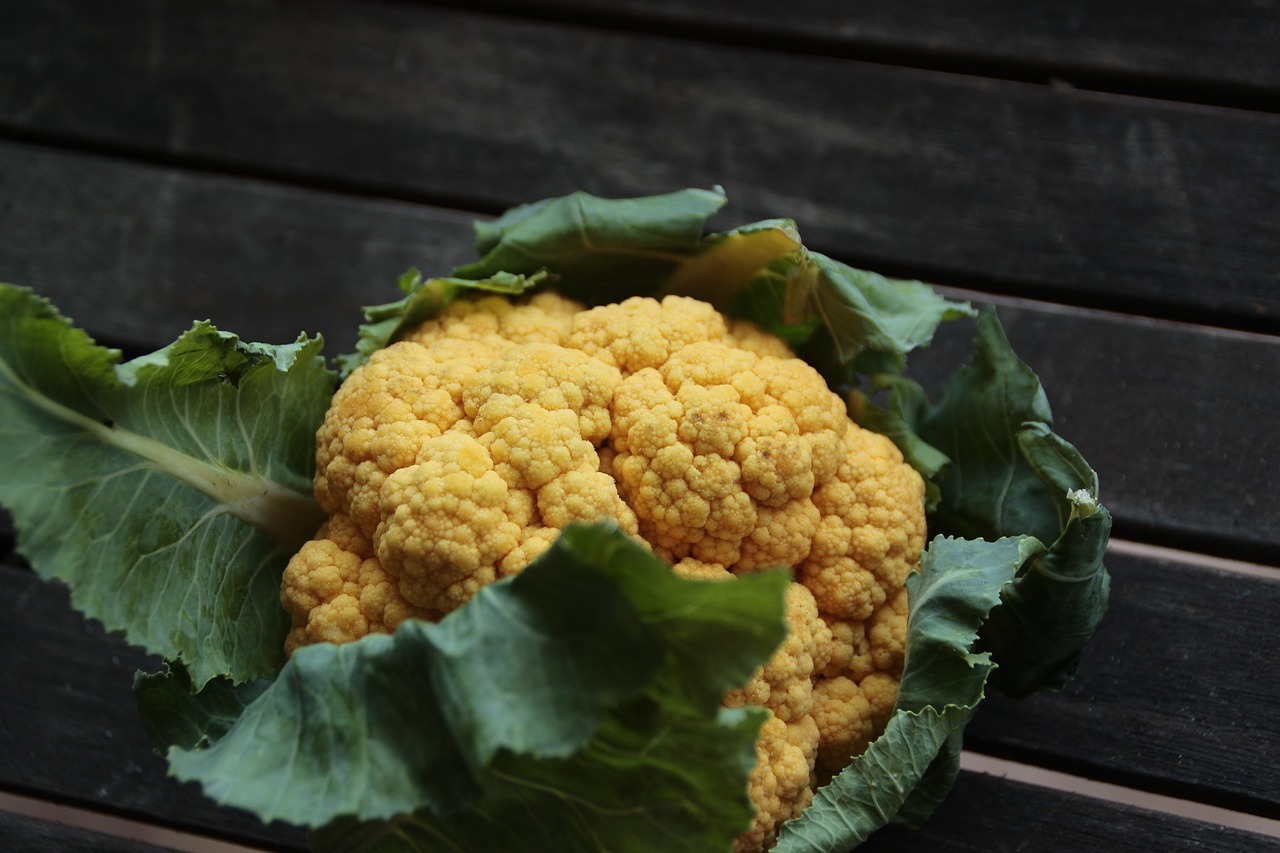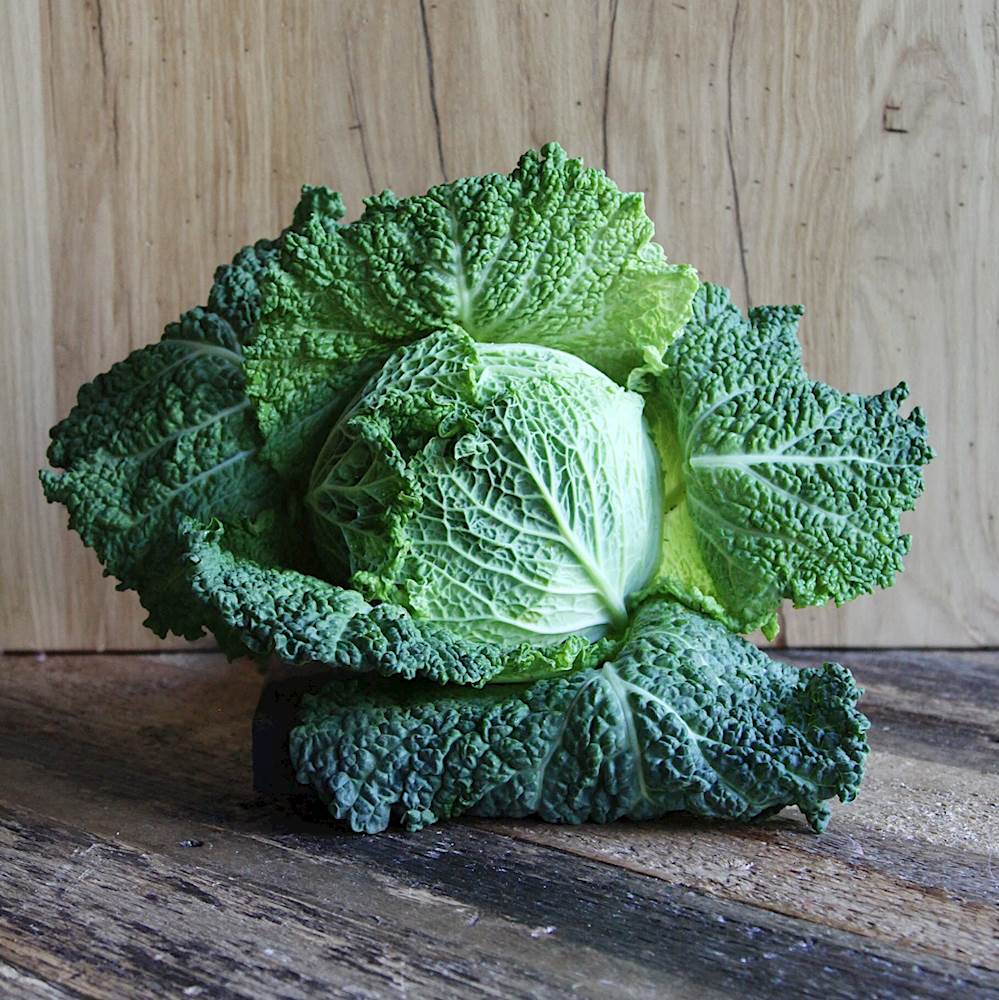Savoy cabbage, like white cabbage, belongs to the type of Cabbage. Savoy cabbage heads are large, but loose, leaves are thin, corrugated. The unusual color of greenish-yellow, light green shades looks very elegant and can decorate a vegetable garden. Savoy cabbage contains sinigrin - a substance with anti-cancer and antibacterial properties, in greater quantities than all other types of cabbage, therefore it is used in medical nutrition. In terms of yield, it is inferior to other varieties, but it is more resistant to adverse environmental factors. It is not difficult to grow Savoy cabbage on your own, it is enough to follow the rules and recommendations at all stages: from preparing seeds to caring for a plant in the garden, which we will gladly tell you about.
Content
In which regions can Savoy cabbage be grown
One of the main advantages of Savoy cabbage is frost resistance. Seeds begin to germinate at a temperature of only +3 ° C, + 16-18 ° C is enough for intensive plant growth, with a short-term cooling to +8 ° C, their development does not stop, but only slows down.
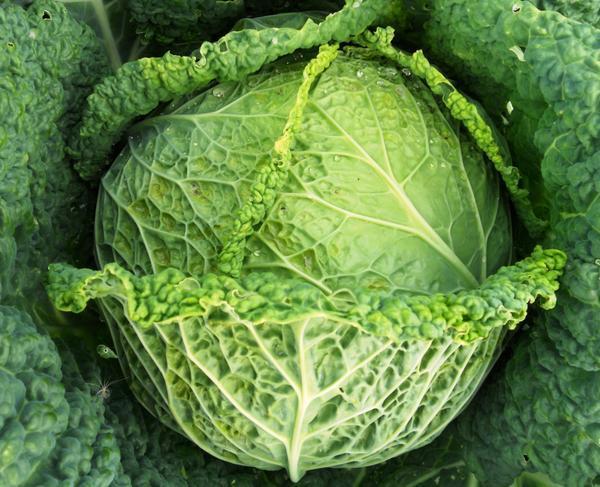
Early ripening variety of Savoy cabbage Zolotaya early is suitable for cultivation in all regions of Russia
Due to its cold resistance, Savoy cabbage can be grown not only in the south of the country and in its central part, but also in more northern regions with short and cool summers. The State Register includes 22 varieties recommended for growing in all regions of Russia. Varieties and hybrids have different ripening periods, and they should be selected taking into account climatic conditions.
Early varieties (Zolotaya early, Moscow lacemaker, Petrovna, Pirozhkovaya) ripen 90-120 days after sprouting, mid-ripening (Melissa F1, Sphere F1, Uralochka, Extrema F1) - in 120-140 days, late-ripening plants (Alaska, Virosa F1 , Jade F1, Nadia) will take 140 days or more. In the south and in the central part of the country, all varieties of Savoy cabbage, including late ones, have time to ripen; the harvest is ready for harvest in early October. In areas of risky farming, it is better to plant early ripening types of vegetables.
Video: Savoy cabbage is a worthy competitor to white cabbage
Growing seedlings
Savoy cabbage is usually grown through seedlings to allow for an earlier harvest.
Sowing dates
The timing of planting seeds for seedlings depends on the early maturity of the variety. Sowing of early ripe cabbage is carried out in mid-March. Seedlings of early varieties are planted in the garden in early May, at the age of 45-50 days. Sowing in medium late varieties is carried out at the end of March-April, in the first half of April, varieties of late ripening are sown. Seedlings of medium and late varieties are transplanted into the ground 35–45 days after sowing.
On a note. In order to be able to prepare vitamin salads from savoy cabbage for a long time until the very cold, you should sow seeds in several stages and grow varieties of different ripening periods.
Soil selection
Sowing soil should be light, loose, with a low level of acidity. The soil mixture is easy to prepare from fertile soil, sand and peat (1: 1: 1); lime or ash (1 tbsp) must be added to the acidic soil. For disinfection, the soil mixture must be spilled with a solution of Fitosporin (1 drop / 1 l) or potassium permanganate. You can buy a thermally processed and completely ready-to-use biogo soil, which, having increased biological activity, accelerates seed germination and improves plant growth.
For growing seedlings, a coconut substrate is also used with the addition of vermiculite (3: 1). The loose structure of coconut fiber allows air and water to pass well, vermiculite contains nutrients, which creates optimal conditions for the development of the root system of seedlings and prevents the appearance of a common fungal disease - black leg.
Seeds are also sown in peat tablets. In addition to peat, they contain mineral additives, antibacterial substances and a growth stimulant. Seedlings grown in such tablets develop more intensively, develop stable immunity, and they are practically not affected by the black leg.
The choice of container for seedlings
Seedlings can be grown in a common box - in this case, grown seedlings with 2-3 leaves must dive into separate containers. In order not to transplant plants and not to stress, you can sow seeds directly into individual cups, jars of yogurt, milk boxes. The ideal option is to grow seedlings in peat pots, which are placed in the garden along with the plant, and, gradually dissolving, they enrich the soil with useful trace elements. Seedling tanks must necessarily have drainage holes so that water does not stagnate in the soil.
Seed preparation
Seeds treated with growth activators are immediately sown on seedlings or in the ground. They have already undergone pre-sowing preparation and have an organomineral shell, which improves germination and increases disease resistance.
Untreated seeds need to be prepared. First, they are calibrated, selecting medium and large for sowing. Then they are disinfected in a solution of potassium permanganate or Fitosporin and to accelerate germination, they are soaked in water with the addition of Epin (2 drops / 1 l) or Nitrofoski (5 g). Seed activation is also promoted by exposure to contrasting temperatures. First, they are immersed in hot (50 ° С) water for 15 minutes, then they are placed in a refrigerator with a temperature of 1-2 ° С for a day. After hardening, they are dried and sowed.
Sowing seeds
If sowing is carried out in a nursery, mark grooves 10 mm deep at a distance of 30 mm from each other and sow seeds at 15 mm intervals. Sprinkle with a substrate, compact a little and moisten from a sprinkler. If the planting is too dense, the seedlings are necessarily thinned out, and when 2-3 pairs of real leaves grow back, they are dived into separate containers, where they will develop until they are planted in the open ground.
It is more convenient to grow seedlings in separate cups. In each, 2-3 seeds are sown, and when 2-3 true leaves open, only one strong plant is left, the weaker ones do not pull out, but cut off. When sowing seeds in individual pots, the seedlings are of a higher quality: even if the seedlings are very carefully removed from the container during the pick, the roots are still injured - some of the suction roots remain in the substrate and they take time to recover. Seedlings grown in separate containers have a developed, fully preserved root system.
Video: sowing savoy cabbage
Seedling care
Plants need to create comfortable conditions - then the seedlings will grow strong and healthy, prepared for transplanting to the garden.
Temperature regime
Containers with crops are placed in a greenhouse with a temperature of at least +20 ° C, airing is carried out daily and condensation is removed. On the 5th day, when the entrances appear, the film is removed and the temperature in the room is lowered to + 10–12 ° С during the day, + 6–8 ° С at night, so that the seedlings do not stretch. Such a temperature regime is maintained for a week, then a comfortable environment is again created for seedlings with a temperature of +20 ° C in the daytime and +18 ° C at night.
Lighting
Seedlings of cabbage should be exposed to light as much as possible. With the appearance of the first shoots, it is better to place it on the windowsill on the south side, creating diffused lighting using reflective screens or sheets of paper. Light mode for young cabbage is at least 12 hours. In case of insufficient lighting, the seedlings become thinner and weaker, in this case additional highlighting is necessary. To do this, phytolamps or LED lamps are installed above the seedlings at a height of 25 cm.
Watering
Cabbage is moisture-loving, for intensive development it is necessary to maintain soil moisture of 75%, air moisture - 85%. With a lack of moisture, the plants wither, the leaves turn yellow. However, stagnation of water in the ground can provoke the development of fungal diseases dangerous for seedlings, primarily black leg. Therefore, watering should be moderate as the topsoil dries up. Water the seedlings only with warm, settled water. The moist soil is carefully loosened for better aeration, and the room with the seedlings is ventilated.
Important! Failure to comply with light and temperature conditions, excessive watering can negatively affect the seedlings: it becomes thinner and stretches. A pick will help save frail seedlings - transplanting into separate pots.
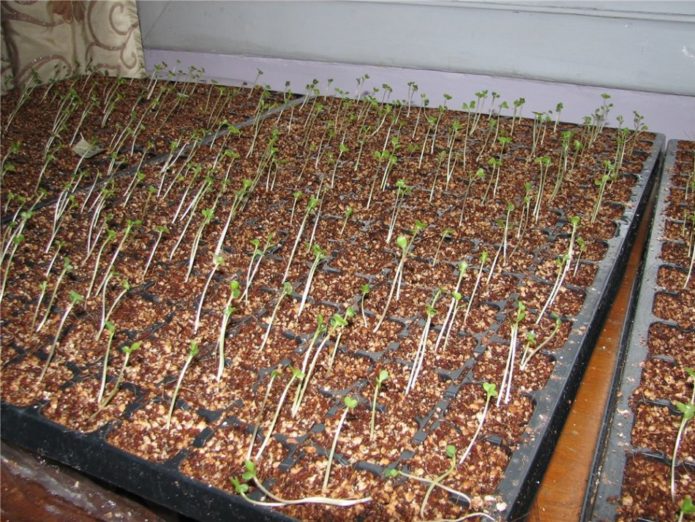
In case of violation of agricultural technology, the seedlings of Savoy cabbage become thinner and stretched
Pickling cabbage
When grown in a common container, seedlings with the appearance of a pair of true leaves are seated in separate containers. Before picking, watering is carried out, with the help of a spatula, the plant is separated with a lump of earth and, holding by the stalk, is planted in a glass. Sprinkle the seedling with a substrate until the cotyledon leaves and moisten. You can add Athlete's solution - growth regulator (1 ampoule / 0.5 l) to the soil and stop watering for 3-4 days. In order for the dived seedlings to recover faster, at first they are kept in a warmer room, protecting them from bright sunlight. Then the ambient temperature is lowered to comfortable values + 20-22 aboutFROM.
Video: picking cabbage - how to grow seedlings at home
Top dressing of seedlings
For full development, seedlings must be provided with nutrition. 2 weeks after sowing the seeds, Agricola solutions (2.5 g / 1 l), Zdraven Turbo (1.5 g / 1 l) are added to the soil. The seedlings are re-fed after 10 days, increasing the amount of fertilizer by one and a half times.
For root dressing or fertilization on the leaf, you can use a biostimulator of growth, a suspension of chlorella (250 ml / 3 L), as a result, the stems become stronger, the leaves and root system develop better. 2-3 days before planting seedlings in open ground, carry out the third feeding, adding potassium (8 mg), superphosphate (5 mg) and ammonium nitrate (3 mg / 1 l) during watering.
Hardening
Gentle seedlings for better adaptation to new conditions begin to harden before planting in the garden. In the room where the seedlings are located, in the first two days, the vents are slightly opened for 3-4 hours. Over the next 3 days, boxes with plants are taken out to a glazed loggia or veranda, shading from the bright sun and gradually increasing the time the seedlings are in a cooler microclimate. By the sixth day of hardening, watering is stopped, and the plants are exposed to the garden for the whole day, and they are brought into the room at night. On the seventh day, containers with seedlings are left in the open air before transplanting to the site.
Prevention of diseases and pests of seedlings
A thickened planting, stagnation of water in the soil, a violation of the temperature regime can cause damage to seedlings with a black leg - the root part of the stem of the seedlings darkens and rots. Diseased plants will have to be removed, and the remaining intact ones should be transplanted into a new substrate and treated with a 1% solution of Bordeaux mixture. To grow healthy seedlings, it is necessary to disinfect the soil mixture and seed material before sowing, do not use cold water for irrigation, spray the seedlings when a pair of leaves appears with a 0.2% Fitosporin solution.
The main enemy of young cabbage is aphid, which reveals its presence with a light bloom on the leaves.... By sucking up the sap of plants, it weakens them and leads to wilting. You can fight harmful insects with the help of herbal remedies (extracts of chamomile, wormwood), ash solution (30 g / 1 l), liquid soap (40 g / 1 l). With a significant accumulation of aphids, effective chemicals are used Anabazine sulfate (1 g / 1 l), Actellik (2 ml / 1 l), Inta-Vir (1 tab. / 10 l).
Planting Savoy cabbage seedlings outdoors
Plants with 3 pairs of true leaves and a strong stem 20–25 cm high are ready for transplanting.
Disembarkation dates
Weather and climatic conditions and early maturity of the variety affect the timing of planting. When the weather is stable (+ 15 ° C during the day) and the soil warms up enough, the sprouts of Savoy cabbage can be transferred to open ground. Seedlings of early varieties and hybrids are planted in late April - early May, mid- and late-ripening - after May 10.
Neighborhood with other cultures
Depending on the terrain, the Savoy cabbage is placed on flat ridges or ridges. She prefers to grow on loose loamy and peaty soils after green manure, onions, cucumbers, carrots, pumpkin seeds, potatoes, and legumes. Beets and tomatoes are less desirable - they significantly deplete the soil, consuming a lot of potassium and phosphorus. Since Savoy cabbage is often affected by keel, it can return to the garden where cabbage crops, rutabagas, radishes, daikon, turnips were grown no earlier than four years later.
Landing scheme
The site is prepared in the fall: they dig a shovel onto a bayonet, add humus (5 kg / m2), acidic soil is alkalized with lime (500 g / m2). In the spring, the soil is loosened, filled with ash (400 g / m2) and urea (1 tsp), then make holes. Early ripening varieties are planted according to the scheme 60 × 40 or 70 × 35 cm; middle and late - 70 × 60 or 70 × 50 cm.
15 g of superphosphate is added to each well, a seedling with an earthen clod is planted, sprinkled with soil and watered. The first 2 days it is necessary to shade young cabbage, when the temperature drops at night, cover it with agrofibre. After a week, unaccepted shoots are removed and fresh seedlings are planted in their place.
On a note. Summer residents who do not want to tinker with seedlings sow seeds directly into the ground at the end of April. A greenhouse is built over the bed, the soil is spilled with a hot solution of potassium permanganate and sowing is carried out. In this case, seed germination is delayed for 2–3 weeks. Water the seedlings of Savoy cabbage begins when the first leaf appears, adding Fitosporin to the water. In the future, with watering, mineral fertilizers are applied every 10 days. With the establishment of warm weather, the shelter is removed from the garden bed.
Savoy cabbage care in the garden
Caring for Savoy cabbage is quite simple, it includes watering, loosening the soil, fertilizing and preventing disease.
Watering and loosening
Savoy, like other varieties of cabbage, is hygrophilous. The planted seedlings are watered after 2-3 days, spending 8 liters per m2... In the future, watering is carried out once a week, increasing the volume of water to 13 l / m2... In the heat, more frequent irrigation of vegetables is necessary. Cabbage especially needs moisture when laying forks: early varieties - in June, late - in August. And so that the heads of cabbage do not crack, water is brought under the root. Watering should be done in the evening or early morning, otherwise the bright midday sun can burn foliage. Wet soil must be loosened to a shallow depth (8 cm).
After 3 weeks after planting, the cabbage is spud, after 10 days - it is processed again. Hilling promotes the development of a more powerful root system, which provides better nutrition and a larger head of cabbage.
Top dressing
When the planted seedlings grow, they add liquid mullein (1:10) or urea (30 g / m2). The cabbage is fed again during the period of curling the head of cabbage, embedding Nitroammofosku (30 g / m2) or pouring with Azofoska solution (50 g / 1 l) and ash (400 g). You can use a mixture of mineral fertilizers, diluting 20 g of urea, 45 g of superphosphate and 20 g of potassium salt in 10 liters of water. On poor soils, the amount of dressings is increased up to 3-4 times. A good organic nutrient for cabbage is infusion of dandelion, nettle.
On a note. By the appearance of plants, you can determine what trace elements they lack. Nitrogen deficiency causes stunted growth of cabbage. With a lack of phosphorus, cabbage leaves become purple, with a lack of potassium, light spots appear at the edges of the leaf. Due to the lack of calcium, cabbage becomes sour.
Disease prevention
Among the diseases affecting savoy cabbage, keela is the most harmful. The spores of the fungus in the soil remain viable for more than 6 years, therefore, for prevention, crop rotation should be observed and cabbage should be planted in the same area only after 4 years, not earlier. The main symptom of the disease is the formation of growths on the roots of plants. Sick seedlings take root poorly, lag behind in growth, in hot weather the lower leaves wither. Plants affected by the keel should be removed and destroyed, the roots of healthy cabbage should be treated with a Homa solution (40 g / 10 l). During the season, 2-4 sprays are carried out with an interval of 10 days.
Excessive watering in extreme heat can spread downy mildew. Weak young plants are especially often affected by fungal disease. Dark spots appear on the upper side of the leaf, the lower side is covered with a grayish coating. At the first signs of the disease, the cabbage is powdered with ash (100 g / m22), sprayed with Fitosporin solution (6 g / 10 l). Several treatments are carried out at weekly intervals.
Pest control
Despite the fact that savoy cabbage is less susceptible to pest attacks than white cabbage, it is necessary to carefully examine the leaves. In rainy weather, slugs are often taken between the pimpled leaves. They not only spoil the appearance of the cabbage, but also reduce its quality. You can prevent the appearance of pests with the help of fragrant plants that are planted around the perimeter of the garden. The strong smell of sage, calendula, marigolds will scare away parasites.
You can spread nettle or wormwood leaves under the heads of cabbage and change them daily. Nettle burns, and wormwood scares off with an unpleasant odor. The use of chemicals (Thunderstorm, Anti-slug), granules of which (15 g / 5 m2) are scattered between rows, but they should be applied no later than 3 weeks before the harvest ripens.
Another pest that loves to eat cabbage leaves is the cruciferous flea. Holes on the leaves indicate its presence. Against insects, decoctions of wormwood, chamomile or dusting with ash of plants and soil are used. With a massive invasion of fleas, cabbage is treated with a solution of Anabazine sulfate (10 g / 10 L), Bitoxibacillin (40 g / 10 L).
Video: how to protect cabbage from pests
Harvesting
Early varieties of cabbage ripen by mid-July. By this time, heads of cabbage weighing 400–600 g had already fully formed and acquired a characteristic varietal color. Do not tighten the collection - the forks will begin to crack. Since it is not suitable for storage, consume it immediately after cutting.
Late, capable of withstanding frosts down to -8 ° C, is removed in mid-October. In the cold, its taste only improves. In a cellar at a temperature of 1-3 ° C, forks can be stored for about three months.
With the onset of frost, you can not remove the heads of cabbage from the garden, and in winter shake off the snow from them, cut them off, put them in cold water for a few minutes and, after thawing, prepare salads and side dishes.
Savoy cabbage, contrary to popular belief, is an unpretentious culture that does not require special care. Due to its frost resistance, it can be grown even in regions with cold climates. And in taste and vitamin and mineral composition it surpasses many types of cabbage. Gardeners who love to experiment plant Savoy cabbage not only as a useful vegetable, but also as an ornamental plant that decorates the summer cottage with green corrugated leaves and surprises neighbors.
